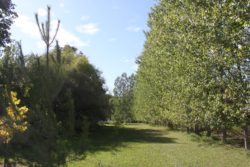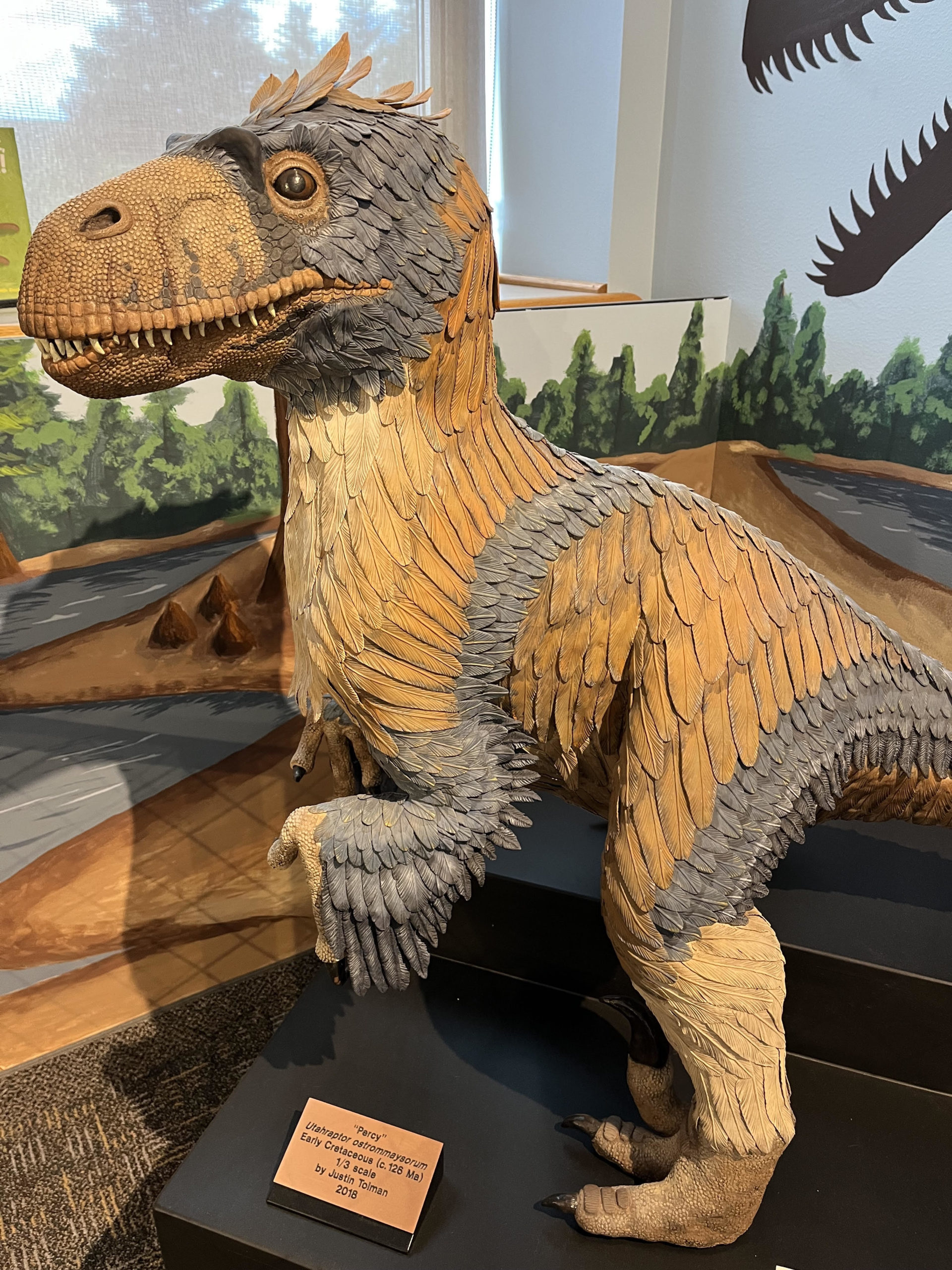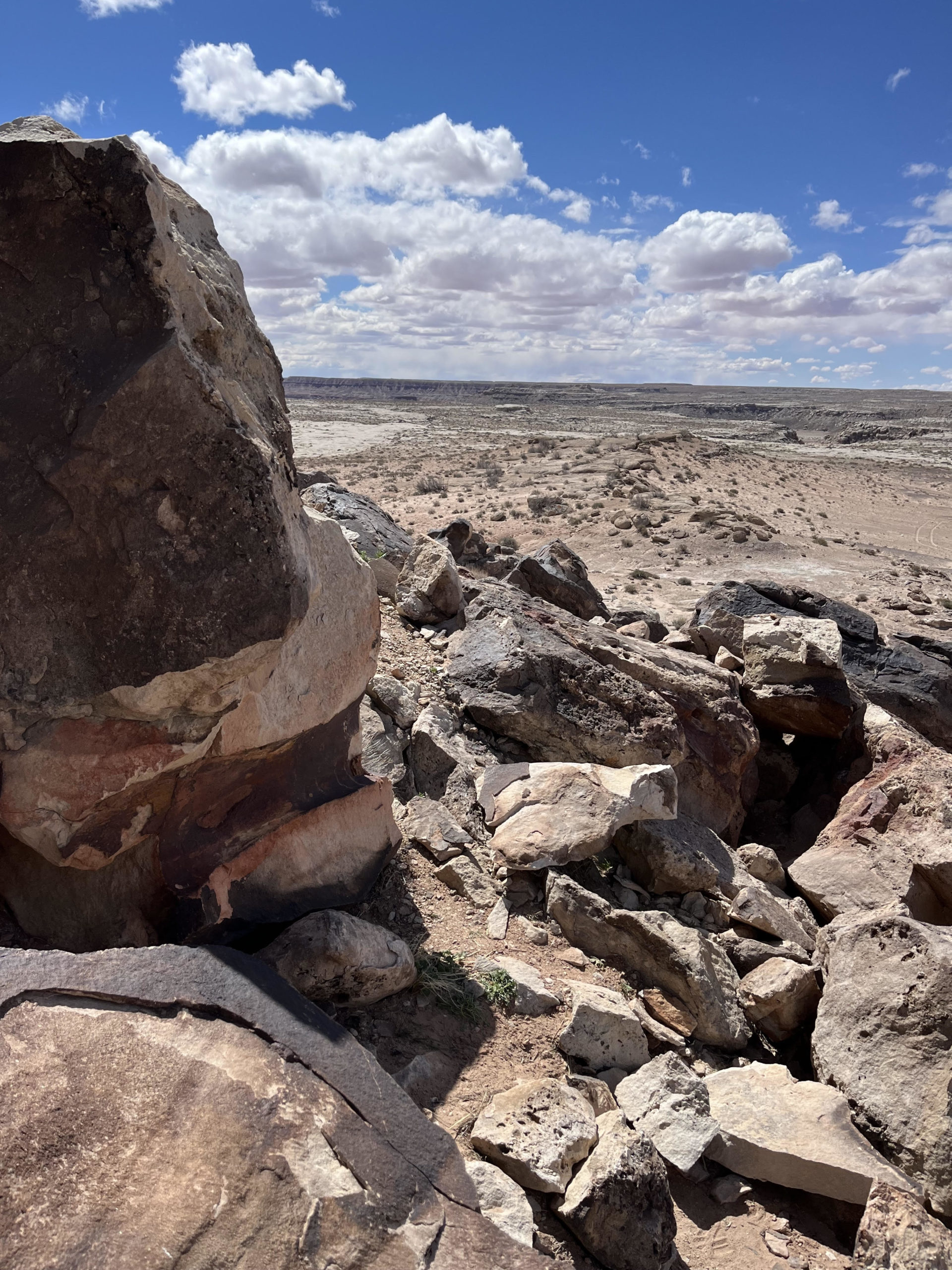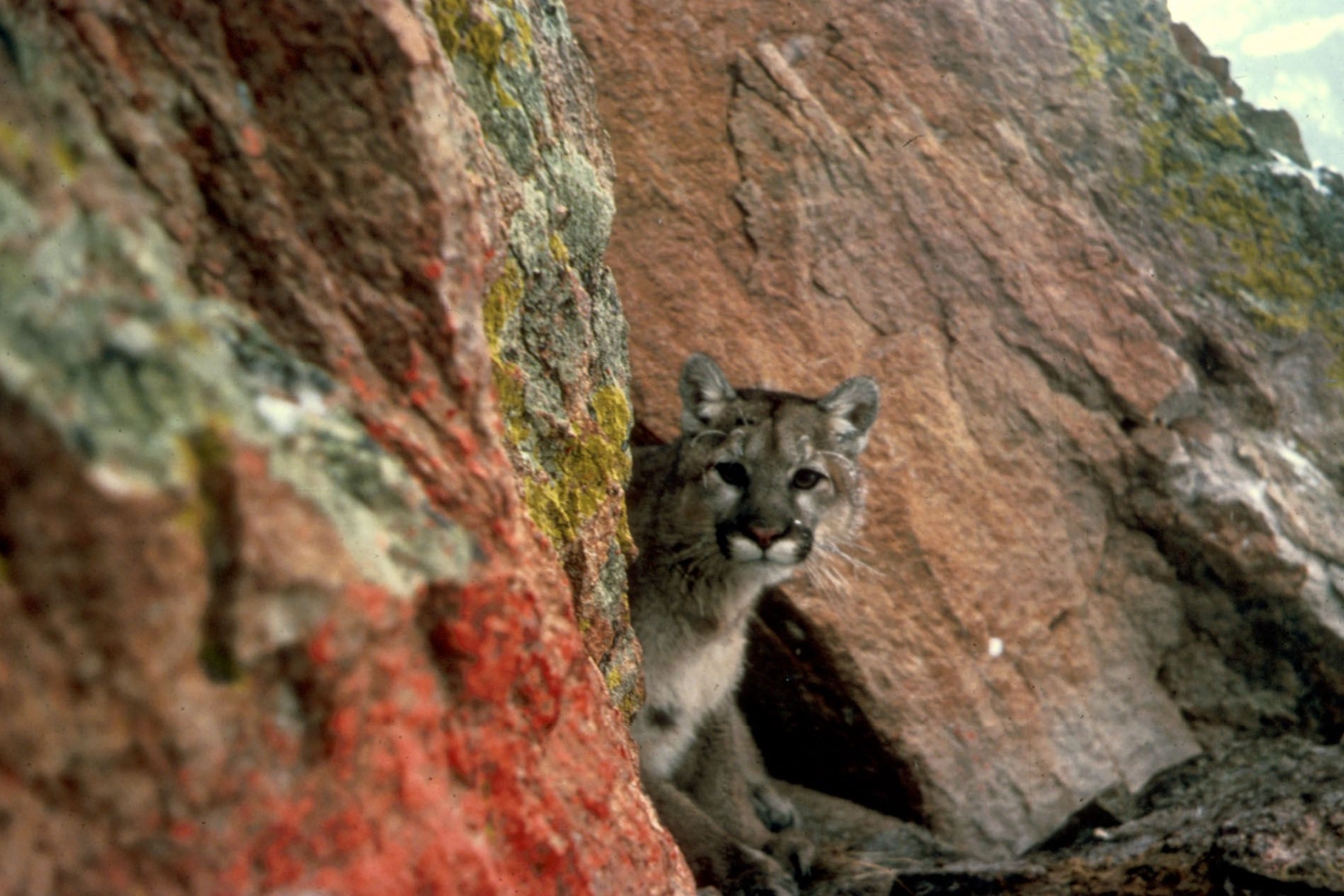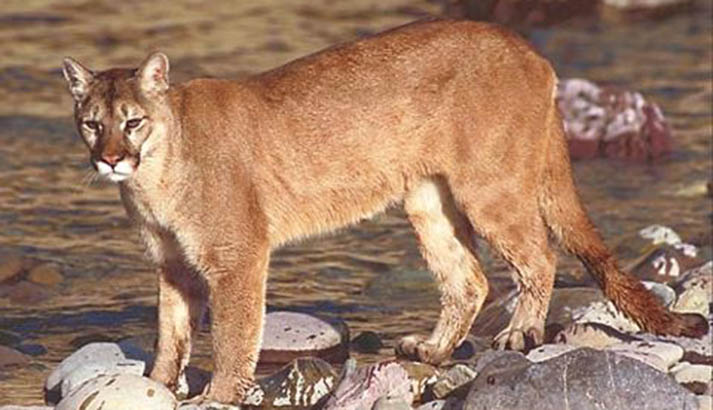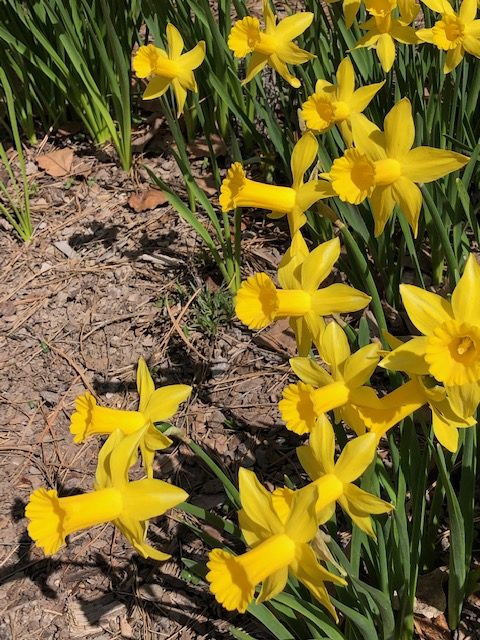
Daffodils at Thanksgiving Point
Courtesy & © Mary Heers, Photographer
 Daffodil Encore
Daffodil Encore
Thanksgiving Point
Courtesy & © Mary Heers, Photographer
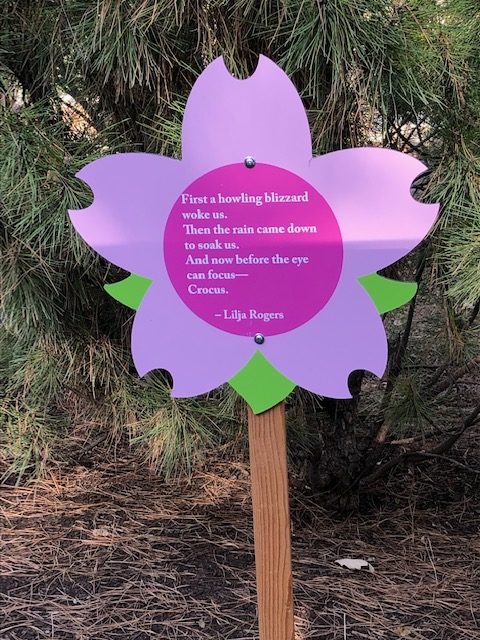 My Favorite Sign Along the Path
My Favorite Sign Along the Path
Lilja Rogers, Published as Hocus Pocus in the Saturday Evening Post, 1961
Image Courtesy & © Mary Heers, Photographer
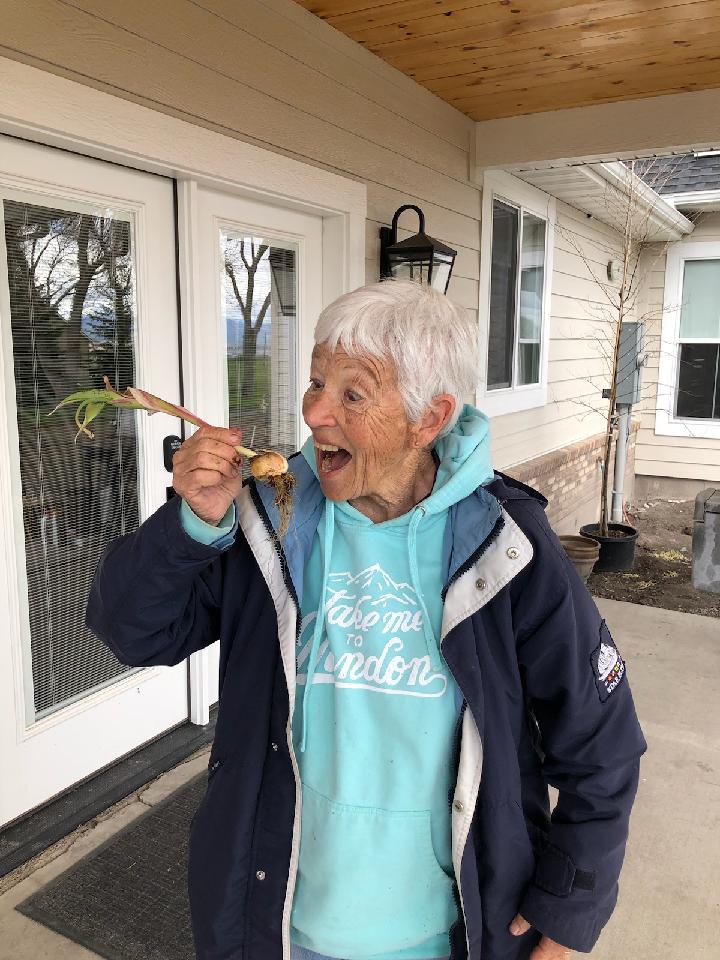 Mary Eating a Tulip
Mary Eating a Tulip
Courtesy & © Mary Heers
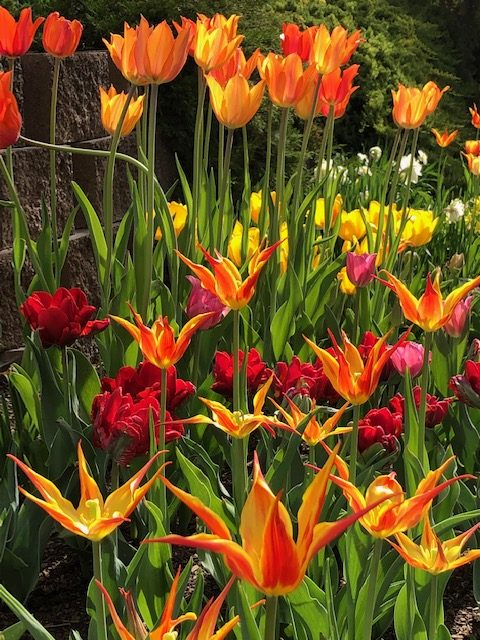

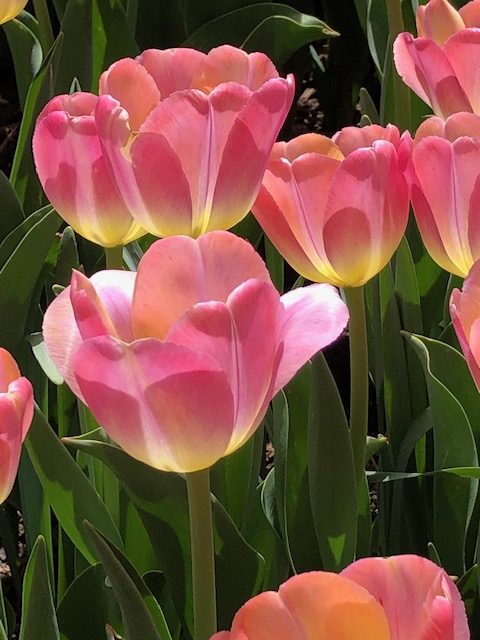
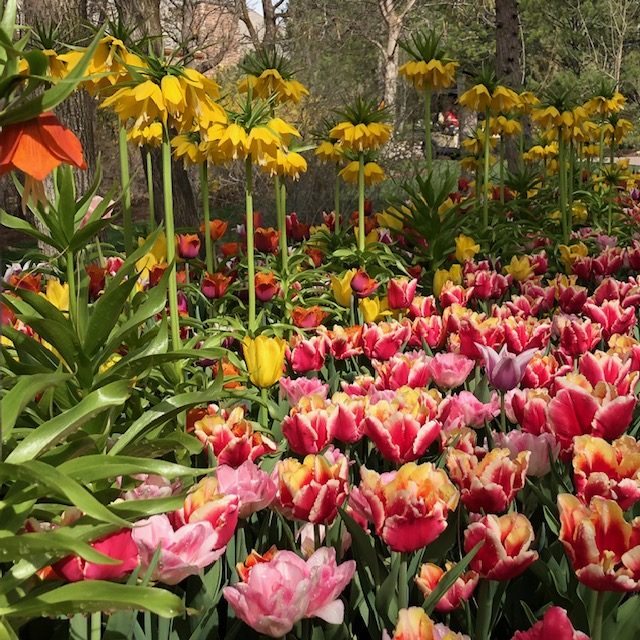
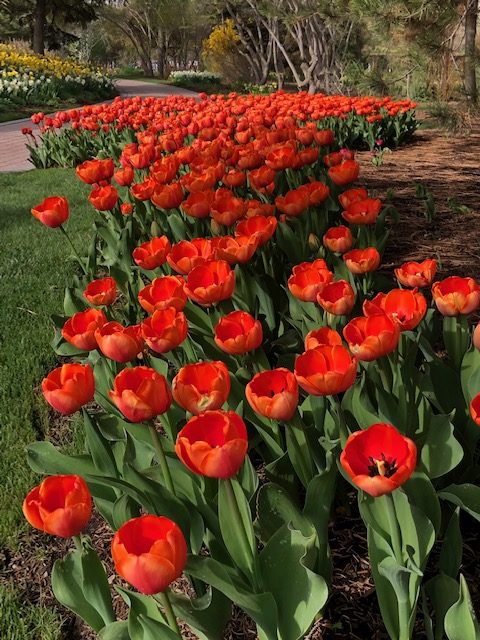
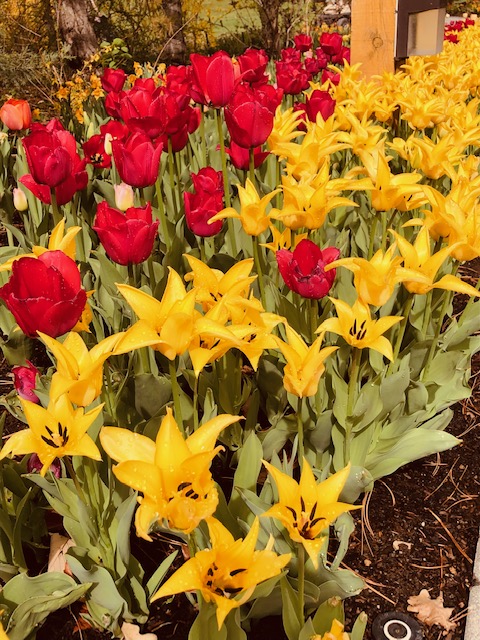 Above Tulips From Rebound Visit
Above Tulips From Rebound Visit
Thanksgiving Point
Courtesy & © Mary Heers, Photographer When I arrived at the Tulip Festival at Thanksgiving Point I was informed by a guide that the tulips were running late.
“No tulips?” I asked. I had heard they had planted 250,000.
“It has everything to do with the soil temperature,” my guide explained. It was April 14. She wasn’t expecting the tulips to emerge for at least another two weeks.
All was not lost, she hastened to add.
“The daffodils are up.”
So off we went along the paths of the 50 acre Ashton Gardens. Sure enough, hundreds of daffodils were waving their heads in the light breeze. I was especially drawn to a patch that they were intensely yellow, almost orange.
“Those are the ‘Tweety-Birds’,” my guide said.
I knelt down to get a good look at the trumpet shape of the flowers. Wow, I thought. This is the trumpet choir heralding the end of winter and the coming of spring.
So with my return ticket secure in my pocket, I went back to Mendon to wait. Snow was still on the ground.
This gave me time to read up on tulips. I found they were originally from Turkey. Tulip, in Turkish, means turban.
The exotic plant arrived in Holland in the 1500’s., It soon became so popular that the price went through the roof. At the height of the tulip mania, some people were willing to pay the price of a house for a single bulb.
About this time, a friend loaned me a book about this phenomenon, Tulip Fever. It turned out to be a real page turner. Set in 1630, young lovers in Amsterdam concocted an incredible scheme to run away and live comfortably in the colonies – if they played their tulips right.
Back in Mendon, when the snow finally started to melt, my neighbors began to tell me how the hungry deer had come into their gardens and beheaded their tulips. Their daffodils were left untouched.
Time for more research. I learned the daffodils produce a toxic alkaloid, lycorine, which makes them taste bitter. Tulips, however, are not only edible, but delicious.
About this time I noticed a lone tulip popping up next to my apple tree. No one planted a bulb here. This tulip had arrived as a seed. Years ago, the wind, or a bird. or an animal dropped this seed . Tulip seeds only take a few months to germinate. But it can take up to 5 years for the plant to produce a bulb which, in turn, produces the flower.
During WWII, when the German army occupied Holland, a large part of the population found themselves with nothing to eat but the tulip bulbs they had set aside to plant. They survived because a tulip bulb has as many calories as a potato.
I was sharing this tidbit of information with my good friend and neighbor when she reminded me the early Mormon pioneers had staved off hunger by eating the wild Sego Lilies that were growing on the nearby mountainsides.
Then she disappeared into her kitchen. She came back with a flower pot holding a tulip that had already bloomed. She pulled out the bulb and asked me if I wanted to taste it.
Never one to refuse a gift, I peeled off the outer layers and took a bite.
I chewed. She waited. It wasn’t bitter and it wasn’t sweet. I chewed some more. I wanted to say
green. Finally it came to me.
“Celery!”
This is Mary Heers and I’m Wild About Utah.
Credits:
Photos: Courtesy & Copyright Mary Heers, Photographer
Featured Audio:
Text: Mary Heers, https://cca.usu.edu/files/awards/art-and-mary-heers-citation.pdf
Additional Reading: Lyle Bingham, https://bridgerlandaudubon.org/
Additional Reading
Wild About Utah, Mary Heers’ Postings
Tulip Festival, Thanksgiving Point, https://thanksgivingpoint.org/events/tulip-festival/
Tulip Festival: Bounce-back!, https://thanksgivingpoint.org/tulip-festival-bounce-back/ [accessed 5/13/2023]
Pace, Eliza, Tulip festival to return to Thanksgiving Point, KSL TV, March 7, 2023, https://ksltv.com/530567/tulip-festival-to-return-to-thanksgiving-point/ [accessed 5/13/2023]
Stefanaki, A., Walter, T. & van Andel, T. Tracing the introduction history of the tulip that went wild (Tulipa sylvestris) in sixteenth-century Europe. Sci Rep 12, 9786 (2022). https://doi.org/10.1038/s41598-022-13378-9 AND https://www.nature.com/articles/s41598-022-13378-9 [accessed 5/13/2023]
The Amsterdam Tulip Museum, https://amsterdamtulipmuseum.com/tulip/
Tulip History Outside Of Holland, The Amsterdam Tulip Museum, https://amsterdamtulipmuseum.com/topics/tulip-history-in-many-nations/
Moggach, Deborah, Tulip Fever: A Novel, Dial Press Trade Paperback, April 10, 2001,https://www.amazon.com/Tulip-Fever-Novel-Deborah-Moggach/dp/0385334923
Eating tulip bulbs, Fluwel, https://www.fluwel.com/pages/eating-tulip-bulbs
Brown, Janice, First a Howling Blizard… A Poem by Lilja Rogers, Posted May 31, 2007, Cow Hampshire, https://www.cowhampshireblog.com/2007/05/31/poem-first-the-howling-winds-awoke-us-by-lilja-rogers/



